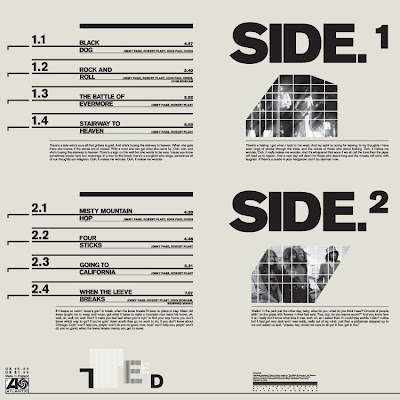More than a year ago, I had a chance encounter with a guy named Kurt Thometz. There’s more on that
here.
While we talked about reading, typography, printing, and other associated topics, we got on to the subject of orality. More specifically, the ideas surrounding orality and literacy. Orality is difficult to define, but loosely, it represents the human concept of a pre-literate time — a time before we had a written language. There are still cultures, usually labeled primitive, that do not write, or read. But they communicate. They transmit thought to one another.


In our modern time, it is of paramount importance to be familiar with the way that computers work, or at least, how to work
with them. As a not-so-distant parallel to that, we must be literate. We must know how to read; and how to write. These are standards in order to be considered an educated person. So, it's strange to consider this dichotomy of orality and literacy, because we see literacy as an obvious advantage. And of course
it is. As a designer and typographer, and a largely visual thinker, it is difficult to imagine the world without written forms of communication.
But were our minds better when we didn’t have the chance to rely on something being written down somewhere? The only reason to consider this is to get closer to understanding how we think. And how our human thinking has changed over the millennia. It is highly unlikely that we will ever return to a time where we can only communicate non-visually. Or to put a sharper point on it, without letters and words. Ray Bradbury captures this well in Fahrenheit 451° where he suggests the idea of texts being memorized by different individuals, and those individuals serving as vessels to bring fragments of human thought forward in a new oral tradition. For example, I would memorize the short story The Dead by James Joyce, and that would be mine to protect. I would know every word, and make sure to pass it along to someone younger, someone committed, who would then, in turn, carry it into the future...
Kurt suggested several books to me — one of which I am finally reading now. It is called
The Muse Learns to Write by Eric A. Havelock. Another is by Havelock’s predecessor Walter J. Ong called
Orality and Literacy. And of course, there is the seminal
Gutenberg Galaxy by Marshall McLuhan. There are many books on these interrelated subjects of thinking/writing/reading, memory, information retention, the development of communication technologies and their effects on the trajectory of human thought.
Essentially, we began to speak to one another. Then we learned to write things down. Then we needed a better way of dispersing the written things. Scribes could only accomplish so much and so, the printing press was invented. Printing presses, their relative speed, and quantity-of-output has increased over time. And now we have the internet as our publication tool. But, as these technologies have rushed forward, what has happened to our brains?
It is worth taking the time to think about this. It is worth imagining a time where we interacted, our bodies and ears and eyes moved from place to place, we spoke to each other and listened. We listened to stories, and we retained information — because we had to, because our memories were all that we had.
(The images above are from Jean Clottes’ book
Return to Chauvet Cave. 35,000 year-old cave paintings were discovered in Chauvet Cave in 1994, making them the world’s oldest. The story of their discovery is well-documented in a beautiful film by Werner Herzog called
The Cave of Forgotten Dreams.) The drawings are mind-bendingly beautiful — shaded, overlapped, and illustrating movement in some cases — a distant precursor to Duchamp’s
Nude Descending a Staircase.














